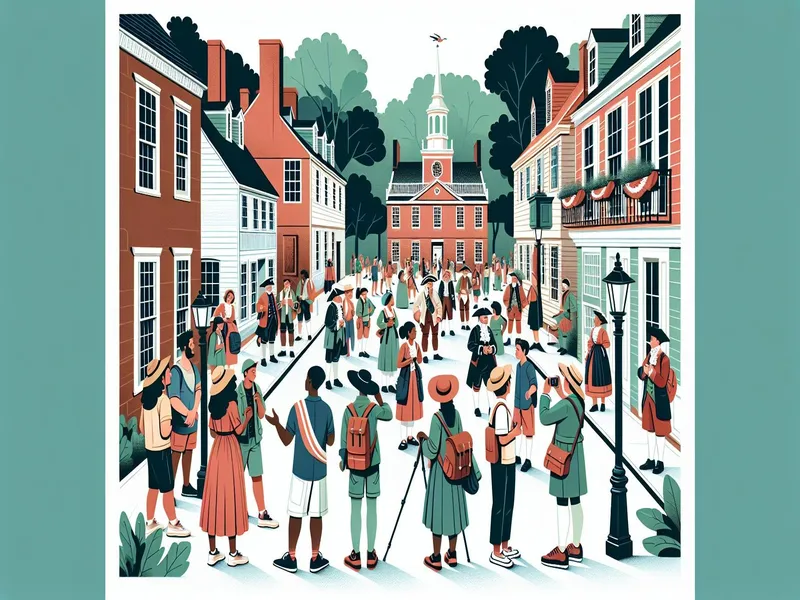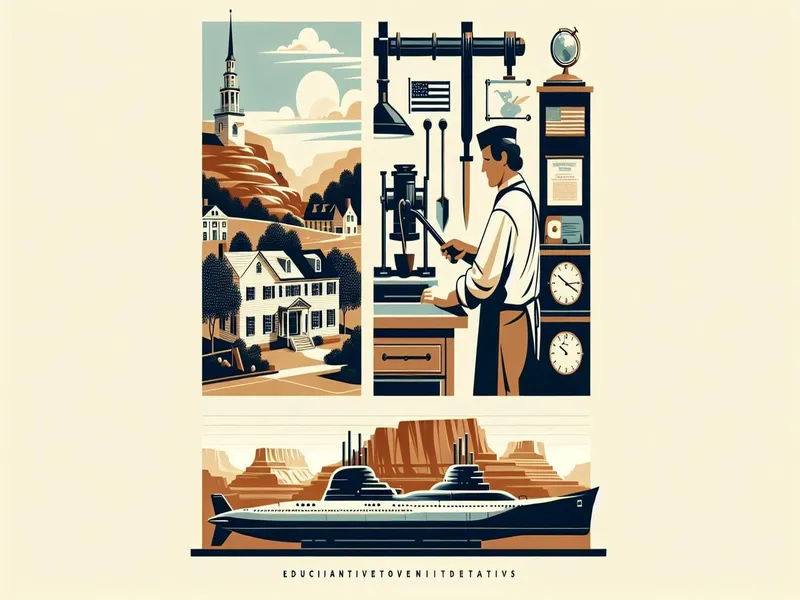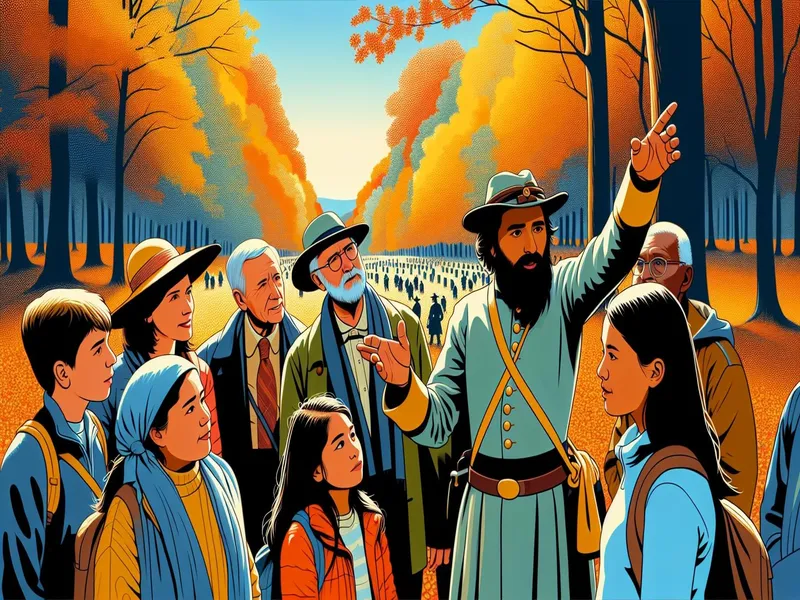
If you’re like me, you crave experiences that go beyond typical tourist attractions and jump into the stories that shaped our world. Whether it’s walking through colonial streets or visiting ancient indigenous sites, history travel can be incredibly rewarding.
Failing to explore these historical treasures means missing out on valuable insights and unforgettable experiences. Without diving into the past, your travels might feel superficial and lack true connection to the places you visit. This could leave you feeling unfulfilled and yearning for something more meaningful.
I’ve spent years uncovering hidden gems and must-see historical landmarks across North America. My expertise ensures you’ll discover destinations brimming with stories waiting to be told. For those who want to enrich their travel experiences, check out my recommendations on travel activities tailored for history enthusiasts.
Whether you’re a seasoned traveler or planning your first historic adventure, this guide will cater to your specific interests and needs. From families seeking educational trips to solo adventurers looking for unique narratives, there’s something here for everyone.
I understand the desire for authentic experiences because I’ve been there too—wanting more from my travels than just pretty photos. Let’s begin on this journey together, turning every trip into an opportunity to connect deeply with North America’s fascinating past.
Overview of History Travel in North America
History travel in North America is like opening a giant, captivating book filled with stories that shaped the world we live in today. Every corner of this diverse continent has something remarkable to offer. Trust me, I’ve wandered through many of them.
When you think about history travel, don’t just picture dusty museums—though they’re pretty cool. Imagine walking the freedom trails or standing where epic battles unfolded. It’s about feeling the weight of history under your feet and seeing it come alive around you.
Key Historical Sites
- Colonial Williamsburg: This place is like stepping into an 18th-century time capsule. You can chat with blacksmiths, watch reenactments, and even try colonial-era recipes. It’s genuinely immersive.
- Gettysburg National Military Park: If you’re into Civil War history, visiting Gettysburg is a must. Standing on those battlefields gives you chills as you imagine the soldiers’ bravery and sacrifice.
- Ellis Island: For many Americans, Ellis Island represents their ancestors’ first steps into the New World. Walking through its halls can make you feel connected to millions of immigrants who sought new lives here.
Lesser-Known Gems
Sometimes it’s fun to go off the beaten path:
- Taos Pueblo: In New Mexico, Taos Pueblo offers a peek into Native American life both past and present. The adobe structures have been continuously inhabited for over 1,000 years!
- Harper’s Ferry: This small West Virginia town played big roles in multiple historical events—from John Brown’s raid to Civil War battles.
Personal Anecdotes
I remember my visit to Salem, Massachusetts—it wasn’t just about witch trials; it was about understanding paranoia and justice gone wrong. Walking through those streets at night gave me goosebumps!
Another unforgettable experience was exploring Montreal’s Old Port area with its cobblestone streets and historic buildings dating back to the French colonial era—it felt like Europe but right here in North America.
Tips for Planning Your Trip
Here are some tips when planning your historical journey:
- Research Ahead: Know what exhibits or tours are available so you don’t miss out.
- Interactive Experiences: Look for places offering hands-on activities or live demonstrations—they make learning fun!
- Local Guides: Hire local guides who can share insider knowledge and tell stories that aren’t in textbooks.
Exploring history isn’t just educational—it’s transformative! You start seeing how past events shape our current worldviews and decisions.
Must-Visit Historical Sites

Exploring historical sites in North America is like opening a time capsule. These places tell the stories of our past and connect us to moments that shaped our world. Let’s jump into some must-visit spots.
Landmarks in the United States
The U.S. is packed with historical landmarks. One favorite spot of mine is Colonial Williamsburg in Virginia. Walking through this living-history museum feels like stepping back into the 18th century with costumed interpreters and restored buildings.
Another gem?Gettysburg National Military Park in Pennsylvania. Standing on that battlefield where President Lincoln delivered his famous address gave me chills. And don’t miss Ellis Island in New York Harbor, which served as the gateway for millions of immigrants.
Here’s a quick list:
- Colonial Williamsburg, Virginia
- Gettysburg National Military Park, Pennsylvania
- Ellis Island, New York
Canadian Historical Treasures
Canada’s history is equally rich and diverse. I was blown away by Old Quebec, a UNESCO World Heritage site with its charming cobblestone streets and centuries-old architecture.
Then there’s Fortress of Louisbourg in Nova Scotia, one of North America’s largest historical reconstructions. You can literally walk through an 18th-century French fortress! And let’s not forget about Banff Springs Hotel, often called Canada’s “Castle in the Rockies,” which has hosted royalty and celebrities since 1888.
Must-see spots include:
- Old Quebec, Quebec
- Fortress of Louisbourg, Nova Scotia
- Banff Springs Hotel, Alberta
Highlights in Mexico
Mexico offers a treasure trove of ancient ruins and colonial cities. Visiting Chichen Itza, a large pre-Columbian archaeological site built by the Maya civilization, felt surreal—like stepping into another era entirely.
I also loved exploring Guanajuato, known for its silver mining history and vibrant colonial architecture. Don’t miss Teotihuacan, near Mexico City; climbing the Pyramid of the Sun there gives you an unforgettable view over this ancient Mesoamerican city.
- Chichen Itza, Yucatán
- Guanajuato City, Guanajuato
- Teotihuacan, State of Mexico
Travel Tips for History Enthusiasts

When diving into North America’s rich world of history, a few travel hacks can make your journey smoother and more enjoyable. I’ve gathered some practical tips to ensure you have the best experience while exploring historical sites.
Best Times to Visit
Timing is everything when it comes to history travel. Visiting during off-peak seasons (like fall or spring) means fewer crowds and cooler weather, making it easier to explore outdoor sites like Gettysburg or Chichen Itza. If you’re planning a trip to Colonial Williamsburg, aim for late September when their re-enactments are in full swing but without the summer heat. Always check local event calendars since festivals and special events can enhance your visit with unique historical insights.
Recommended Tours and Guides
Guided tours can transform your trip from interesting to unforgettable. I once took a walking tour in Old Quebec with a guide dressed as a French soldier—his stories brought the old city alive! Look for tours that offer interactive experiences; many places like Ellis Island have audio guides narrated by historians or descendants of immigrants who passed through there. Websites like Viator or GetYourGuide list highly-rated options, so you can find something tailored to your interests.
Budgeting for Your Historical Journey
Traveling through history doesn’t have to expensive if you plan wisely. Many historical sites offer free entry on certain days—did you know most US National Parks waive fees on specific holidays? Look out for those opportunities! Also, consider purchasing city passes which include multiple attractions at a discounted rate; they’re perfect if you’re hitting several spots in one area. Allocate funds for guided tours—they’re worth every penny for the depth of knowledge you’ll gain.
Pro Tip: Pack snacks and water; concession stands at popular sites tend to be pricey!
By keeping these tips in mind, you’ll not only save money but also enrich your travel experience through thoughtful planning and engaging resources.
Cultural Insights and Local Traditions
History travel in North America isn’t just about landmarks. It’s also a deep jump into the vibrant cultures and traditions that shaped the continent. Let’s explore some key cultural aspects.
Understanding Indigenous History
North America’s story starts with its Indigenous peoples. Visiting places like Chaco Canyon or Mesa Verde, you can see ancient cliff dwellings and understand their way of life. I once visited Taos Pueblo in New Mexico; it’s a living community that’s been continuously inhabited for over 1,000 years! Imagine standing in structures built centuries ago while hearing stories from current residents—it’s surreal.
Colonial and Revolutionary Eras
The colonial period offers fascinating glimpses into early European settlements. When I walked through Colonial Williamsburg, it felt like stepping back in time with cobblestone streets and actors in period costumes. Similarly, Boston’s Freedom Trail is packed with sites from the American Revolution era. Picture yourself at Paul Revere’s House or Old North Church—these aren’t just places but pivotal spots where history unfolded right before our eyes.
Exploring these eras helps us appreciate how diverse influences shaped modern North America, blending various cultural elements into the rich world we see today.
Modern Interpretations of History
History travel isn’t just about dusty old books and plaques. It’s living, breathing experiences that bring the past to life in ways you never imagined. Let’s jump into how modern interpretations make history travel in North America more engaging and memorable.
Museums and Exhibits
Museums have come a long way from being stuffy halls filled with artifacts behind glass. Today, they’re interactive spaces where history comes alive. Take the National Museum of African American History and Culture in Washington, D.C. It’s not just about looking at objects; it’s about feeling the weight of history through multimedia exhibits and personal stories.
Hands-on exhibits are all the rage now. For instance, at Philadelphia’s Museum of the American Revolution, you can climb aboard a replica warship or try on period clothing. These immersive elements make history tangible and relatable.
- Virtual Reality (VR): Many museums offer VR experiences to transport you back in time.
- Interactive Touchscreens: Learn through touch-based displays that provide deeper context.
- Storytelling Sessions: Listen to experts recount tales from different eras.
Historical Reenactments and Festivals
Nothing beats seeing history unfold right before your eyes. Historical reenactments aren’t just for hardcore history buffs; they’re fun for everyone! Imagine stepping into a time machine when you visit events like Colonial Williamsburg’s seasonal festivals or Civil War reenactments at Gettysburg.
Reenactors dress up in authentic costumes, recreate battles, and even set up camp like it was done centuries ago. You get to ask questions, handle replicas of historical items, and sometimes even participate in activities.
I’ve attended one such festival at Old Sturbridge Village in Massachusetts where I churned butter alongside reenactors dressed as 19th-century villagers—it felt like I’d stepped onto a movie set!
- Annual Events: Check out places like Jamestown Settlement for annual festivals celebrating colonial life.
- Living History Programs: Participate actively by joining workshops on traditional crafts or warfare techniques.
- Cultural Celebrations: Don’t miss Indigenous powwows or Mexican Dia de los Muertos festivals for a mix of history and culture.
Traveling through North America’s past doesn’t mean staring at static displays anymore; it means experiencing the lives of those who came before us through modern interpretations that breathe new life into old stories.
The Bottom Line
History travel in North America offers an unparalleled journey through time. By exploring both famous landmarks and hidden gems, we gain a deeper appreciation for the events that shaped our world today. Engaging with history on this level enriches our travels and connects us to diverse cultures and traditions.
Whether you’re walking freedom trails or visiting living communities like Taos Pueblo, there’s always something profound to discover. As museums and historical sites evolve into interactive experiences, history becomes more accessible and engaging than ever before.
So next time you plan your travels, consider diving into the rich world of North America’s past. It promises not only education but also a transformative experience that will stay with you long after your trip ends.